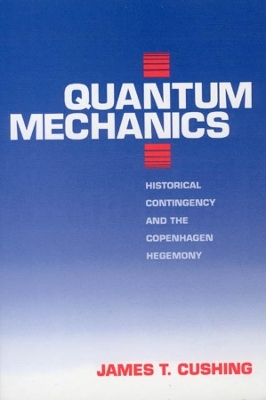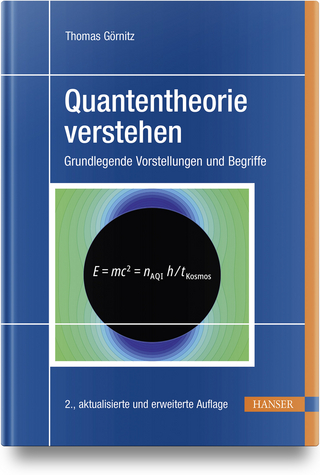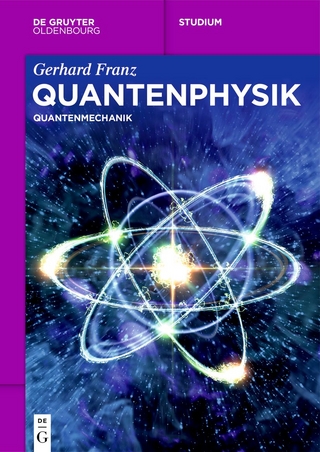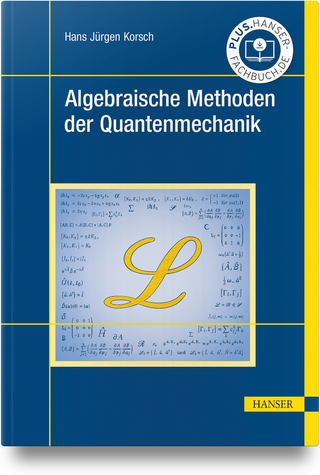
Quantum Mechanics
Historical Contingency and the Copenhagen Hegemony
Seiten
1994
University of Chicago Press (Verlag)
978-0-226-13204-4 (ISBN)
University of Chicago Press (Verlag)
978-0-226-13204-4 (ISBN)
In examining the role that timing can play in the establishment of theory and explanation, this book argues that the Copenhagen interpretation of quantum mechanics was accepted not because it was better than David Bohm's (who supplied an alternative explanation), but because it appeared first.
Why does one theory "succeed" while another, possibly clearer interpretation, fails? By exploring two observationally equivalent, yet conceptually incompatible, views of quantum mechanics, James T. Cushing shows how historical contingency can be crucial to determining a theory's construction and its position among competing views. Since the late 1920s, the theory formulated by Niels Bohr and his colleagues at Copenhagen has been the dominant interpretation of quantum mechanics. Yet an alternative interpretation, rooted in the work of Louis de Broglie in the early 1920s and reformulated and extended by David Bohm in the 1950s, equally well explains the observational data. Through a detailed historical and sociological study of the physicists who developed different theories of quantum mechanics, the debates within and between opposing camps, and the receptions given to each theory, Cushing shows that despite the preeminence of the Copenhagen view, the Bohm interpretation cannot be ignored. Cushing contends that the Copenhagen interpretation became widely accepted not because it is a better explanation of subatomic phenomena than Bohm's, but because it happened to appear first.
Focusing on the philosophical, social and cultural forces that shaped one of the most important developments in modern physics, this book examines the role that timing can play in the establishment of theory and explanation.
Why does one theory "succeed" while another, possibly clearer interpretation, fails? By exploring two observationally equivalent, yet conceptually incompatible, views of quantum mechanics, James T. Cushing shows how historical contingency can be crucial to determining a theory's construction and its position among competing views. Since the late 1920s, the theory formulated by Niels Bohr and his colleagues at Copenhagen has been the dominant interpretation of quantum mechanics. Yet an alternative interpretation, rooted in the work of Louis de Broglie in the early 1920s and reformulated and extended by David Bohm in the 1950s, equally well explains the observational data. Through a detailed historical and sociological study of the physicists who developed different theories of quantum mechanics, the debates within and between opposing camps, and the receptions given to each theory, Cushing shows that despite the preeminence of the Copenhagen view, the Bohm interpretation cannot be ignored. Cushing contends that the Copenhagen interpretation became widely accepted not because it is a better explanation of subatomic phenomena than Bohm's, but because it happened to appear first.
Focusing on the philosophical, social and cultural forces that shaped one of the most important developments in modern physics, this book examines the role that timing can play in the establishment of theory and explanation.
| Erscheint lt. Verlag | 1.11.1994 |
|---|---|
| Reihe/Serie | Science & its Conceptual Foundations Series SCF |
| Sprache | englisch |
| Maße | 15 x 23 mm |
| Gewicht | 510 g |
| Themenwelt | Geisteswissenschaften |
| Naturwissenschaften ► Physik / Astronomie ► Quantenphysik | |
| Sozialwissenschaften | |
| ISBN-10 | 0-226-13204-8 / 0226132048 |
| ISBN-13 | 978-0-226-13204-4 / 9780226132044 |
| Zustand | Neuware |
| Haben Sie eine Frage zum Produkt? |
Mehr entdecken
aus dem Bereich
aus dem Bereich
Grundlegende Vorstellungen und Begriffe
Buch | Hardcover (2024)
Carl Hanser (Verlag)
44,99 €


